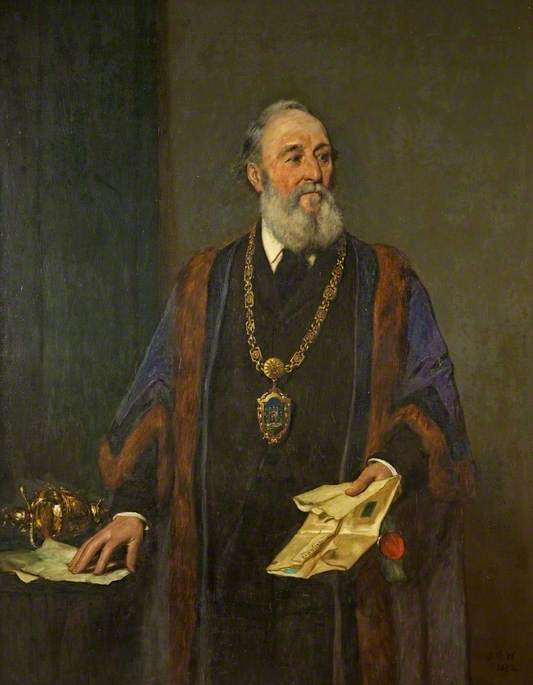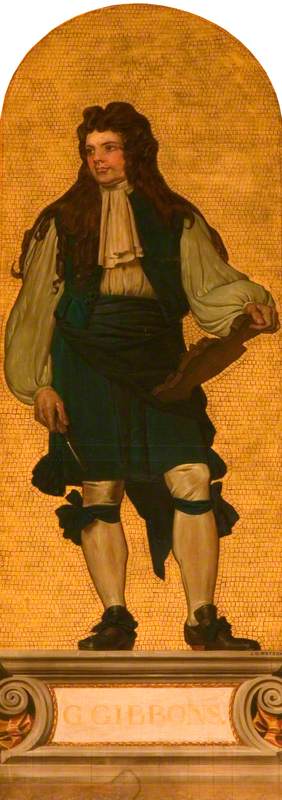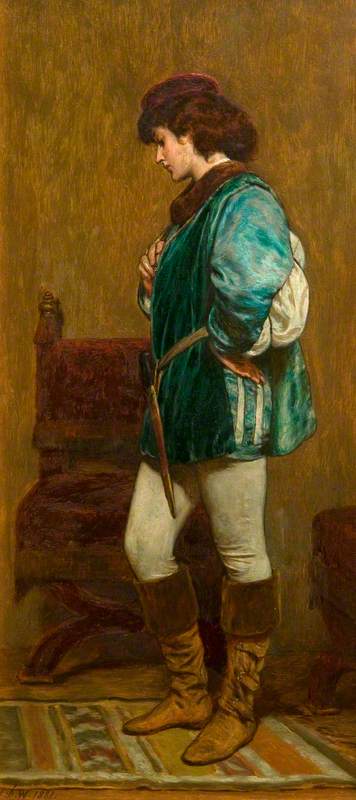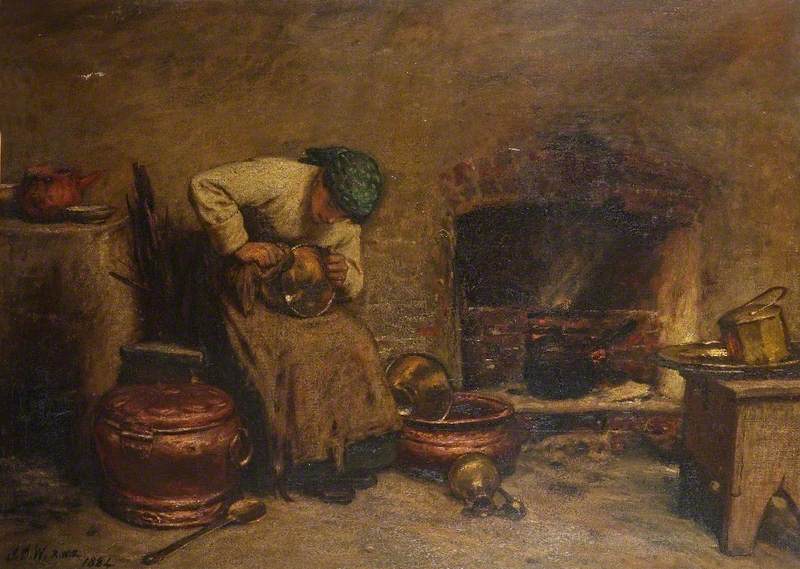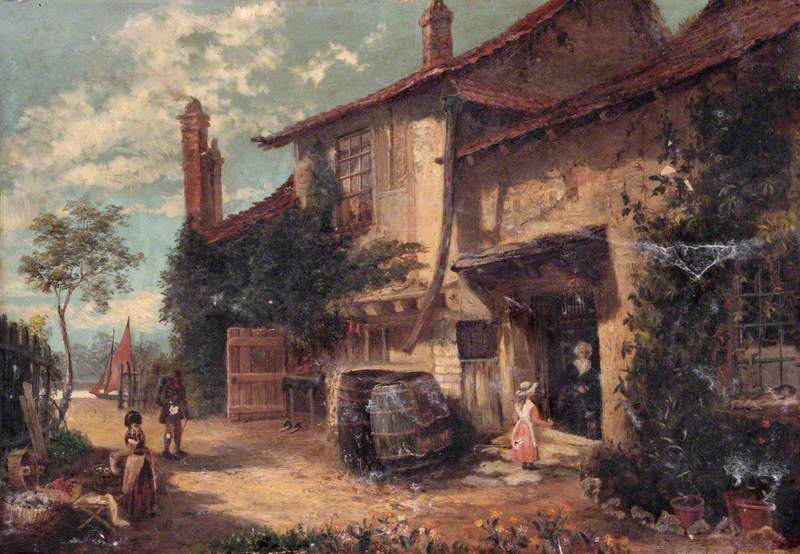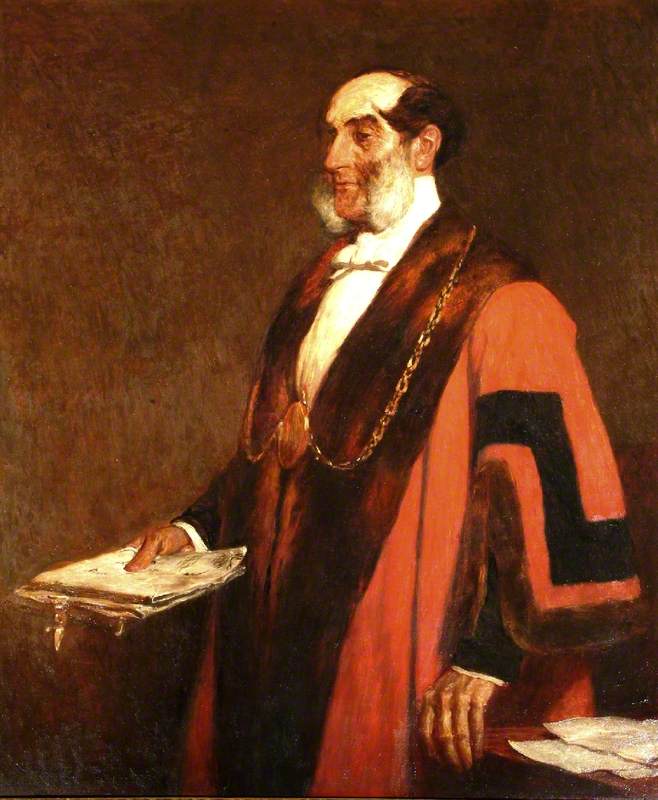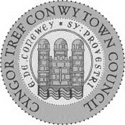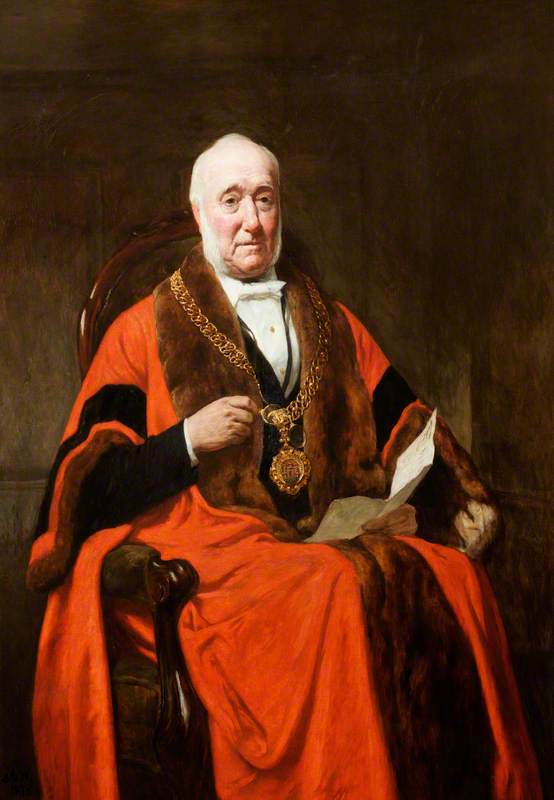
John Dawson Watson [also known as J. D. Watson] was born in Sedbergh, Cumbria, England on 20 May 1832. In 1847, aged fifteen, he entered Manchester School of Design where he was taught by George Hayes. In 1851 he moved to London and began working in the studio of Alexander Davis Cooper. He also studied at the Royal Academy Schools in London in 1851-52. In 1852 he returned to Sedburgh and not long after moved to Manchester where he set up as a portrait painter, specialising in portraits of children. He returned to London in 1860 and in 1861 received an important commission from Routledge to provide 110 black and white drawings for an edition of Bunyan's Pilgrim's Progress. He subsequently illustrated several more books over the next two decades.
Watson contributed regularly at the Royal Academy in London from 1853 to 1890. He also exhibited at the Grosvenor Gallery, Royal Society of British Artists and Royal Society of Painters in Water Colours in London; the Walker Art Gallery in Liverpool; Royal Manchester Institution; Royal Glasgow Institute of the Fine Arts; and at the Royal Cambrian Academy in Conway, Wales.
He was elected an Associate of the Royal Society of Painters in Water Colours (ARWS) in 1865 and a full member of the Royal Society of Painters in Water Colours (RWS) in 1870. He was also elected a member of the Royal Society of British Artists (RBA) in 1882. He was a founder member of the Royal Cambrian Academy (RCA) in 1881.
In addition to his work as a painter and illustrator, Watson designed furniture and costumes for a production of Henry V in Manchester in 1872.
Watson's address was given as 4 Norfolk Street, Manchester in 1853 and 1854; 12 St. Augustine's Road, Camden Square, London in 1855 and 1859; 8 Oval Road, Regent's Park, London in 1861 and 1863; 37 Gloucester Road, Regent's Park, London in 1865; Milford, Godalming, Surrey in 1866 and 1875; 8 Birners Street, London in 1876; 22 St. Edmund's Terrace, Regent's Park, London in 1878 and 1880; Longden, 19 Marlborough Road, London in 1881 and 1883; and 3 The Villas, Eaton Terrace, St. John's Wood, London in 1889 and 1890. From 1884 Watson also lived at Plas Uchaf, a house in Lancaster Square, Conway, Wales where he died on 3 January 1892.
Text source: Art History Research net (AHR net)
Text source: Art History Research net (AHR net)
